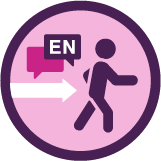Cause and effect
Role play: global warming
How to use Get, Have, and Make as Causative Verbs
Giving reasons with Due to / Owing to
Quiz: Cause and effect
Emphasazing
How to use One of, Some of, and Among to emphasize
Even and Not even
Wherever, Whoever, Whatever
How to use Be about to
Quiz: Emphasazing
Passive voice
How to use Ditransitive Verbs in Passive Voice
How to express past beliefs using Passive Voice
It's being discussed
Quiz: Passive voice
Requests and strong advice
Role Play: Emergency plan
Using "You'd better" to give strong advice
How to create smooth orders and requests
Quiz: Requests and strong advice
Present expressions
Are we supposed to do this?
In case of vs. In case
Hypothetical situations with "Unless"
How to use Past Perfect structure
Quiz: Present expressions
Past
How to use past perfect
How to use the third conditional
Quiz: Past
See you next time!
Congratulations!
Você não tem acesso a esta aula
Continue aprendendo! Junte-se e comece a impulsionar sua carreira
Se você já tem uma conta,
How to express past beliefs using Passive Voice
9/21Una forma de expresar creencias del pasado es utilizando la voz pasiva. Emplea las siguientes estructuras:
- Past clause of belief + would + passive infinite
- Past clause of belief + was / were + going to + passive infinite
Ambas maneras son correctas y expresan la misma intención.
Voz activa vs. voz pasiva
Recuerda la diferencia entre voz activa y voz pasiva antes de continuar:
| Voz activa | Voz pasiva |
|---|---|
| He cleaned his car. | The car was cleaned. |
| Mary sent a letter to her husband. | The letter was sent to Mary’s husband. |
| They prepared a party to celebrate. | The party was prepared for them to celebrate. |
En voz activa se hace énfasis en quien realiza la acción, mientras que en voz pasiva se destaca el objeto que recibe la acción.
Expresando creencias del pasado
Conociendo ya esta nueva estructura y cómo funciona la voz pasiva, puedes construir oraciones de la siguiente manera:
- I told you my brother would be arrived late.
- I told you my brother was going to be arrived late.
- He thought the car would be cleaned by his brother.
- He thought the car was going to be cleaned by his brother.
- I thought the apples would be bought by your friend.
- I thought the apples were going to be bought by your friend.
Contribución creada por: Kevin Fiorentino.
Contribuições 0
Perguntas 0

Quer ver mais contribuições, perguntas e respostas da comunidade?